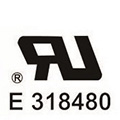Knowledge Articles of Wire Harness - What is a Wire Harness?
1. What is a Wire Harness?
When an electric application requires multiple electrical connections, in order to simplify the wiring design, facilitate the assembly process during manufacturing, and reduce the wiring required, multiple wires will be bundled together into what is called a “Wire Harness.”
-
Convenience
A wire harness, often referred to as a cable harness or wiring assembly, is an efficiently combined arrangement of cables, bound together in a manner that will insulate and protect the wires within the application. The combination of wires is bound together with straps, cable ties, plastic sleeves, electrical tape, conduit, or a combination of these fasteners.
By having all the wires integrated into a single unit, the wire harness simplifies the manufacturing process, saving time during assembly. The installation process becomes a simple matter of “dropping in” the harness, rather than connecting all of the wires individually.
-
Reliability
When wires and cables are bound within a single harness, the individual components are better protected from the adverse effects of vibrations, abrasion, and moisture. Having all the wires assembled into one secure structure optimizes the use of space and reduces the risk of electrical shorts. Wires can also be bound within a flame-retardant sleeve to reduce the risk of electrical fires.
-
Cable Assembly
A wire assembly which is similar to the wire harness is the cable assembly. Unlike the wire harness, which has multiple branching, a cable assembly generally has only two ends, but its purpose, as with the wire harness, is to assure a reliable wire-connector assembly.
2. Wire Harness Specification and Material Selection
At first sight, a wire harness may not appear to be too technical, but it is a key component in any electrical application, and its performance and reliability depend on a thorough understanding of the conditions under which the harness will be used, as well as an understanding of the materials that will be best suited for the application.
-
Application Parameters
A wire harness is designed to meet the electrical requirements of the equipment it is to be installed in. Electrical currents and voltage must be considered in the choosing of product materials. Physical requirements of the connectors, as well as material composition, will determine the proper performance of a good wire harness. A well-designed schematic will not only assure a highly reliable product, but will also allow for efficient manufacturing.
-
Environmental Considerations
Wire harnesses are used in all environments, so in addition to considerations for internal electrical properties, the external properties of the harness need to be considered to ensure adequate protection from the environment.
Mechanical properties such as flexibility will determine the materials best suited for rigid conductors needing stiffer cables, or small-gauge strands needing more flexibility.
Chemical properties can determine a cables resistance to moisture or UV radiation, and its ability to avoid premature degradation.
Temperature conditions can dictate the type and amount of insulation necessary in an industrial cable.
3. Design and Assembly of Wire Harnesses
The assembly process for wire harnesses involves a combination of both automated processes and hand assembling. Wire harnesses are produced in three phases: cutting, pre-assembly and final assembly.
-
Cutting
Using a highly automated process, machines cut the wires to specific lengths, strip off the insulation, and crimp on and terminals. This automated process ensures the precision and quality of the wires to be used for the harness.
-
Pre-Assembly
Cut and crimped wires are assembled into bundles or kits to be prepared for final assembly.
-
Final Assembly
Due to the large variety of processes that are involved in the final assembly, wire harnesses are most efficiently assembled by hand rather than automation. In the final assembly area, wire harnesses are assembled on form boards which allow for quick assembly and ensure product consistency.
4. Applications of Wire Harnesses
Wire harness applications are used in nearly every conceivable household, commercial or industrial electronic device. Wire assemblies are used throughout the transportation industry in automobiles, buses, trucks, and planes. Industrial equipment, electronics and household appliances are all constructed using wire harnesses.
They are used in temperature-controlled buildings such as hospitals, where precision performance is required, as well as in harsh outdoor climates, where wide temperature extremes, or even corrosive marine environments can be very demanding.
Wire harnesses provide efficient wiring solutions for electrical devices and equipment that will significantly impact the overall performance, reliability, and stability of those products. Wire harnesses are vital to the manufacturing of nearly all electronic products.
5. Customized Wiring Harnesses and Wire Harness Solutions
When choosing the design for a wire harness, you will want to take all the above parameters into consideration. In addition to product design, you will also want to take into consideration any governmental regulations or standards that may apply.
By working with a dependable manufacturer, that provides reliable professional service, you can have confidence in knowing that you are keeping up with the latest technological advancements and are getting the best possible products at the best possible price.
➤ More Wire Harnesses Products









